Ccl27a
-
Official Full Name
chemokine (C-C motif) ligand 27A
-
Synonyms
CCL27A;chemokine (C-C motif) ligand 27A;C-C motif chemokine 27;skinkine;skinskine;CC chemokine ILC;small inducible cytokine A27;small-inducible cytokine A27;IL-11 R-alpha-locus chemokine;small inducible cytokine A27a;chemokine (C-C motif) ligand 27;cutaneous T-cell-attracting chemokine;ALP;ILC;CTAK;CTACK;Ccl27;PESKY;ESkine;Scya27;Scya27a;AW558992;MGC130150;
| Species | Cat.# | Product name | Source (Host) | Tag | Protein Length | Price |
|---|---|---|---|---|---|---|
| Mouse | Ccl27a-657M | Active Recombinant Mouse Ccl27a | E.coli | N/A | Leu26-Asn120 |
|
| Mouse | Ccl27a-118M | Recombinant Mouse Ccl27a protein | E.coli | N/A | 95 |
|
| Zebrafish | CCL27A-8690Z | Recombinant Zebrafish CCL27A | Mammalian Cell | His |
|
- Background
- Quality Guarantee
- Case Study
- Involved Pathway
- Protein Function
- Interacting Protein
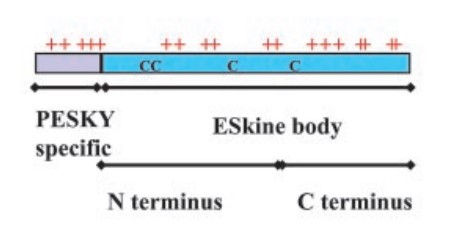
Fig1. Diagrammatic representation of PESKY indicating the distribution of basic amino acid residues (marked +) and the subdivision of the molecule into regions for determination of nuclear translocation ability. (Andreas Gortz, 2002)
What is CCL27A protein?
CCL27A (C-C motif chemokine ligand 27A) gene is a protein coding gene. The mouse Ccl27a protein is a small molecular weight cytokine belonging to the CC chemokine family, also known as CTACK. The protein is expressed in a variety of tissues, including gonads, thymus, placenta and skin. Orthologous to human CCL27 (C-C motif chemokine ligand 27). The CCL27A protein is consisted of 120 amino acids and its molecular mass is approximately 13.5 kDa.
What is the function of CCL27A protein?
Inflammatory factors such as IL-1β or TNF-α stimulate the overexpression of CCL27a, while glucocorticoid inhibits its expression. CCL27a exerts its chemotactic effect by binding to the chemokine receptor CCR10, which is mainly involved in the homing of memory T lymphocytes into the skin and plays an important role in T-cell-mediated skin inflammation.
CCL27A Related Signaling Pathway
In mice, Ccl27a, by binding to its receptor CCR10, regulates the homing of memory T lymphocytes to the skin, which plays an important role in T-cell-mediated skin inflammation. In addition, the increased expression level of Ccl27a in tumor progression is also related to the JAK-STAT signaling pathway.
CCL27A Related Diseases
In mice, Ccl27a is highly expressed in the skin and is associated with skin immune responses, skin inflammation and allergic reactions. Some studies have found that mice with a defective CTACK gene are protective against experimental autoimmune encephalomyelitis (EAE), a disease that mimics multiple sclerosis (MS). Other diseases such as tumors, autoimmune diseases, etc.
Bioapplications of CCL27A
Based on the important role of Ccl27a in regulating specific types of immune cells, antagonists or agonists targeting Ccl27a or its receptor, Ccr10, can be developed to treat related diseases. Given Ccl27a's ability to recruit immune cells, especially T cells, to tissues such as the skin, it may be useful to enhance the effectiveness of immunotherapies.
High Purity
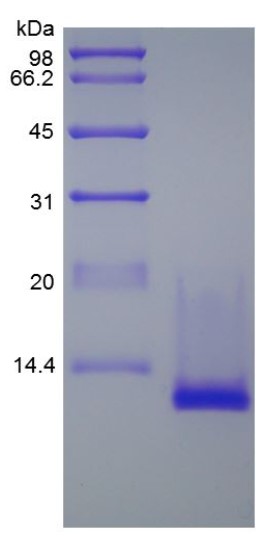
Fig1. SDS-PAGE (Ccl27a-118M) (PROTOCOL for western blot)
Case study 1: Lin Chen, 2006
The keratin-14 IL-4 transgenic (Tg) mouse model of atopic dermatitis (AD) is characterized by skin infiltration of T cells, early up-regulation of T(h)2 cytokines and late surge of T(h)1 cytokines. In the present study, the researchers investigated the role of CCL27, a T cell skin-homing chemokine known to be elevated in sera of human AD patients, in disease development in our animal model of AD. The results showed that the mRNA and protein levels of CCL27 in the skin and serum were significantly increased in IL-4 Tg mice. Chemotaxis transmigration assay demonstrated that CCL27 promotes a greater degree of migration of T cells in diseased Tg mice. Subcutaneous injection of neutralizing anti-CCL27 to IL-4 Tg mice with early skin lesions resulted in reduced clinical progression of inflammation.
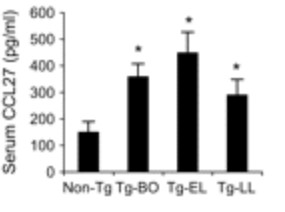
Fig1. Serum levels of CCL27 at different stages of the disease were examined by ELISA.
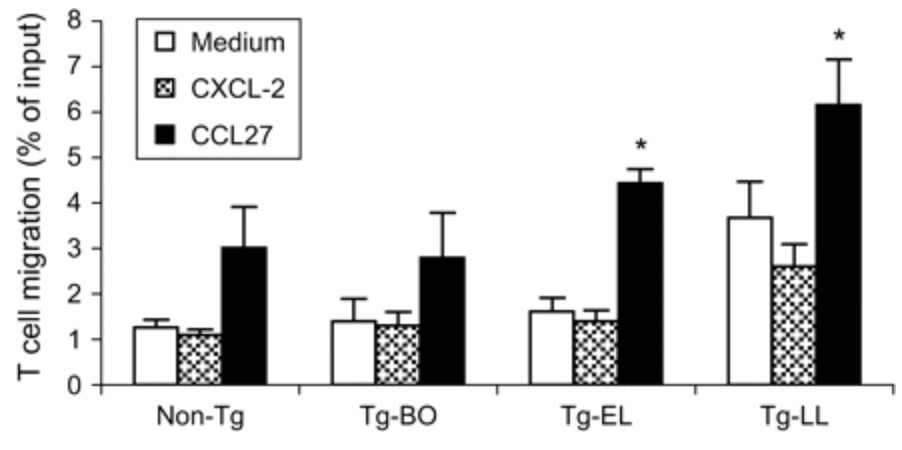
Case study 2: Micha L Davila, 2022
Abundant immune cells reside in barrier tissues. Understanding the regulation of these cells can yield insights on their roles in tissue homeostasis and inflammation. Here, the researchers report that the chemokine CCL27 is critical for establishment of resident lymphocytes and immune homeostasis in barrier tissues.
CCL27 expression is associated with normal skin and hair follicle development independent of commensal bacterial stimulation, indicative of a homeostatic role for the chemokine. Accordingly, in the skin of CCL27-knockout mice, there is a reduced presence and dysregulated localization of T cells that express CCR10, the cognate receptor to CCL27. Besides, CCL27-knockout mice have overreactive skin inflammatory responses in an imiquimod-induced model of psoriasis. Beyond the skin, CCL27-knockout mice have increased infiltration of CCR10+ T cells into lungs and reproductive tracts, the latter of which also exhibit spontaneous inflammation.
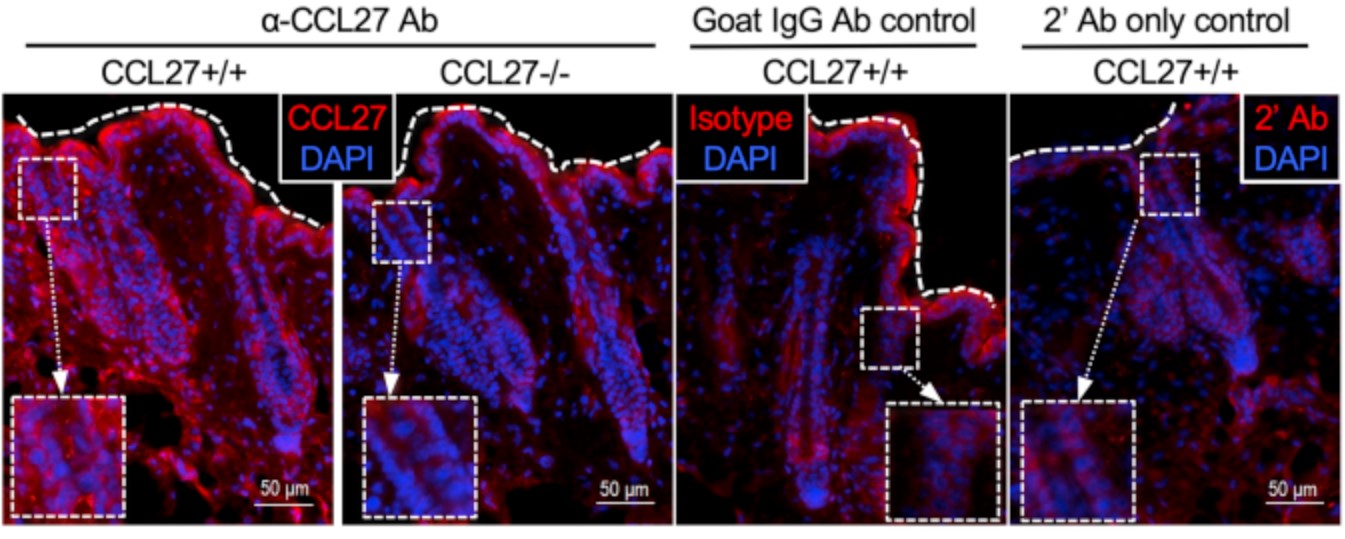
Fig3. Immunofluorescent α-CCL27 antibody staining images on 10μm skin sections from CCL27+/+ and CCL27−/− mice.
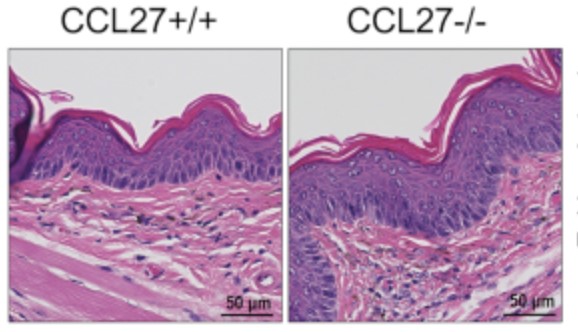
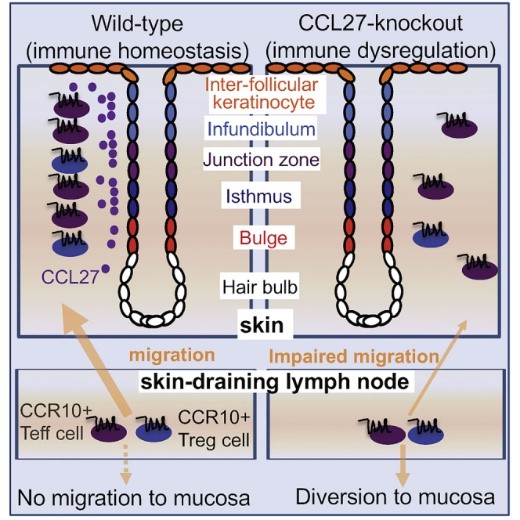
Fig1. CCL27 is a crucial regulator of immune homeostasis of the skin and mucosal tissues. (Micha L Davila, 2022)
Ccl27a involved in several pathways and played different roles in them. We selected most pathways Ccl27a participated on our site, such as Cytokine-cytokine receptor interaction, Chemokine signaling pathway, which may be useful for your reference. Also, other proteins which involved in the same pathway with Ccl27a were listed below. Creative BioMart supplied nearly all the proteins listed, you can search them on our site.
| Pathway Name | Pathway Related Protein |
|---|---|
| Cytokine-cytokine receptor interaction | IFNAR2;TGFBR2;ACVR1;IL-15RA;TNFRSF18;IL23;IFNK;TNFSF18;IL17B |
| Chemokine signaling pathway | Adcy4;HRAS;CCL3L3;ELMO1;CXCL8;SHC2;VAV2;CCL3;RAP1B |
Ccl27a has several biochemical functions, for example, cytokine activity, protein binding. Some of the functions are cooperated with other proteins, some of the functions could acted by Ccl27a itself. We selected most functions Ccl27a had, and list some proteins which have the same functions with Ccl27a. You can find most of the proteins on our site.
| Function | Related Protein |
|---|---|
| cytokine activity | INHBE;NRG1;GM13278;SCG2;IFNA7;IFNA21;IL24;IL22;IL25 |
| protein binding | INADL;ORC3L;CDC25B;MRTO4;SPINK1;VAMP3;BLNK;MICA;LNPEP |
Ccl27a has direct interactions with proteins and molecules. Those interactions were detected by several methods such as yeast two hybrid, co-IP, pull-down and so on. We selected proteins and molecules interacted with Ccl27a here. Most of them are supplied by our site. Hope this information will be useful for your research of Ccl27a.
- Q&As
- Reviews
Q&As (6)
Ask a questionExpression level of CCL27A protein can be detected by immunohistochemistry, western blotting, and real-time PCR.
The CCL27A protein interacts with receptors on the surface of skin keratinocytes and immune cells, such as the CCR10 receptor.
Interaction between CCL27A protein and other proteins is regulated by the formation of complexes or the regulation of signal transduction pathways.
The expression of CCL27A protein can be regulated by a variety of factors, including inflammatory factors, ultraviolet light, and infectious agents such as bacteria or viruses.
Function of the CCL27A protein can be studied by overexpression techniques, such as the use of gene transduction or viral transduction. These techniques can increase the expression level of CCL27A protein to observe its effects on skin inflammation and immune response, among other things.
The function of the CCL27A protein can be studied by gene knockout or knockdown techniques, such as using techniques such as CRISPR-Cas9 or RNAi. These techniques can create cellular models with missing or reduced CCL27A protein to observe its effects on skin inflammation and immune responses, among other things.
Customer Reviews (3)
Write a reviewCCL27A has good solubility and ion exchange ability, which is convenient for subsequent experimental treatment and purification.
The stability of CCL27A has good adaptability under different temperature and pH conditions.
When conducting experiments with CCL27A, clear and consistent results can be obtained for easy data analysis and interpretation.
Ask a Question for All Ccl27a Products
Required fields are marked with *
My Review for All Ccl27a Products
Required fields are marked with *


